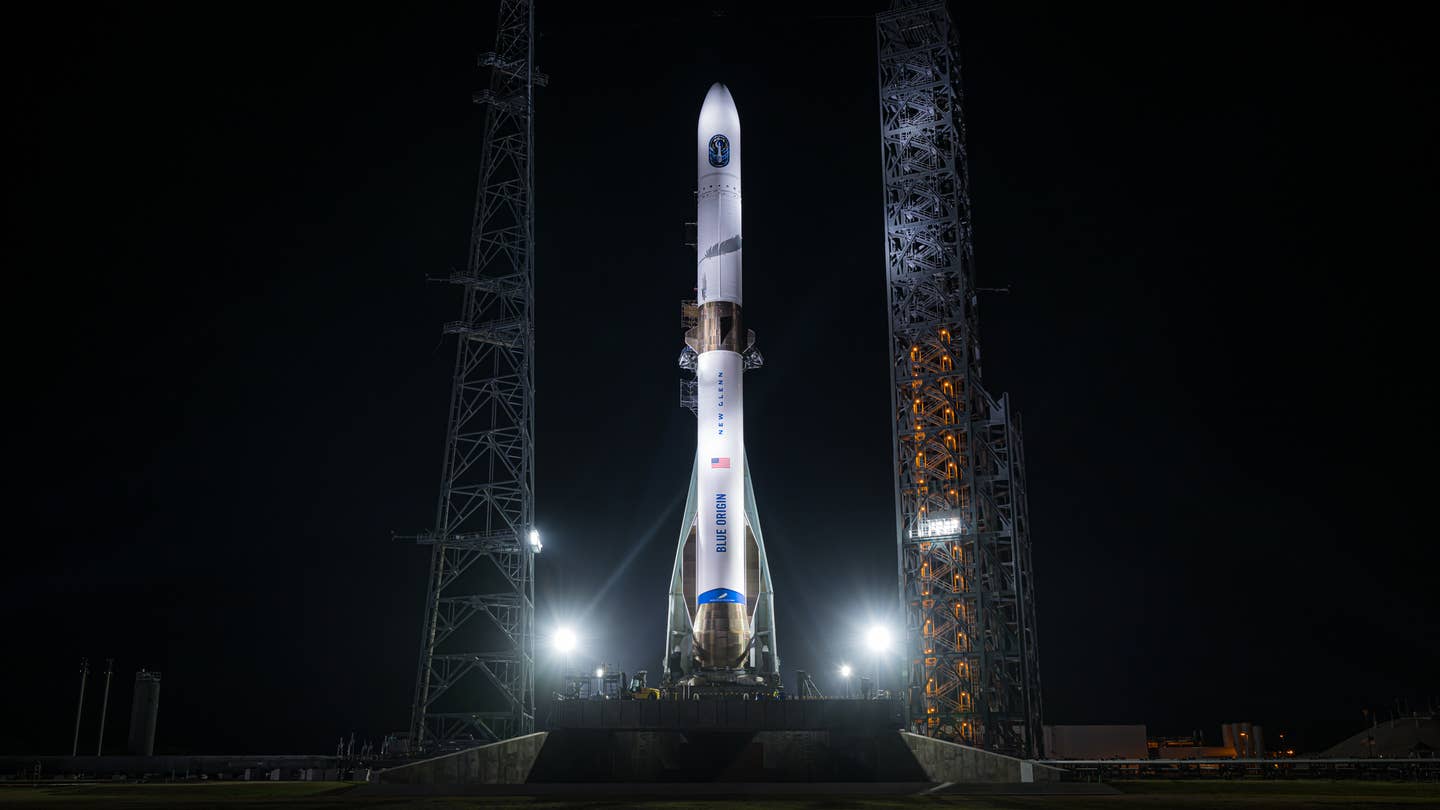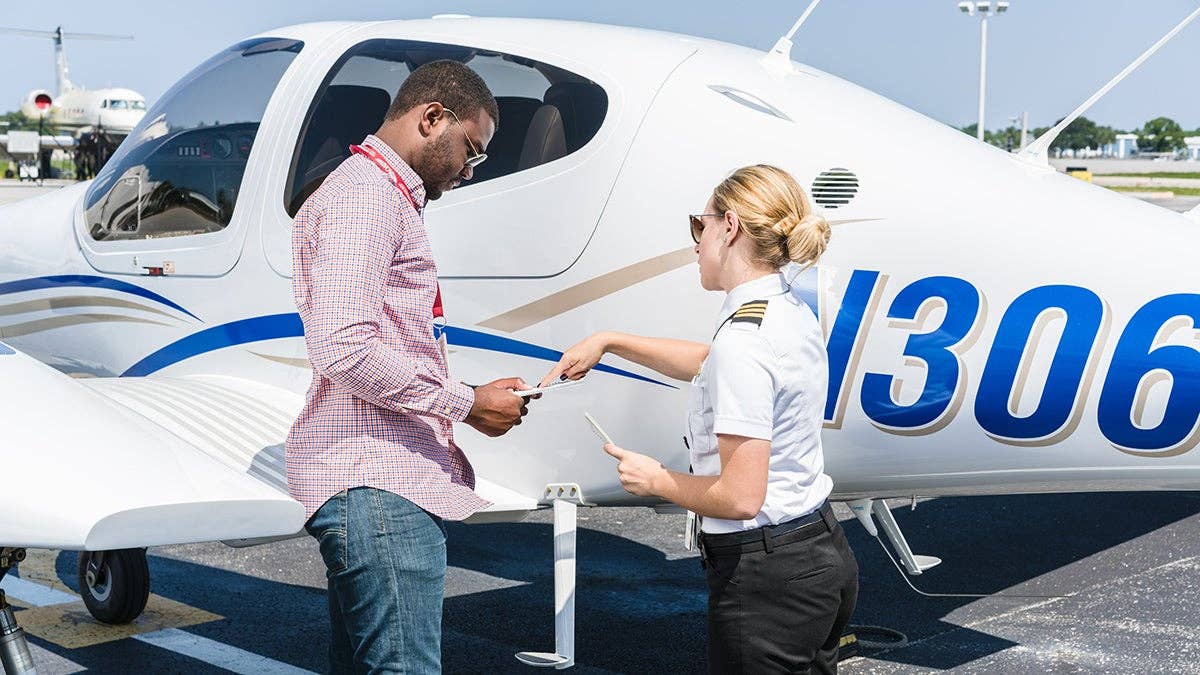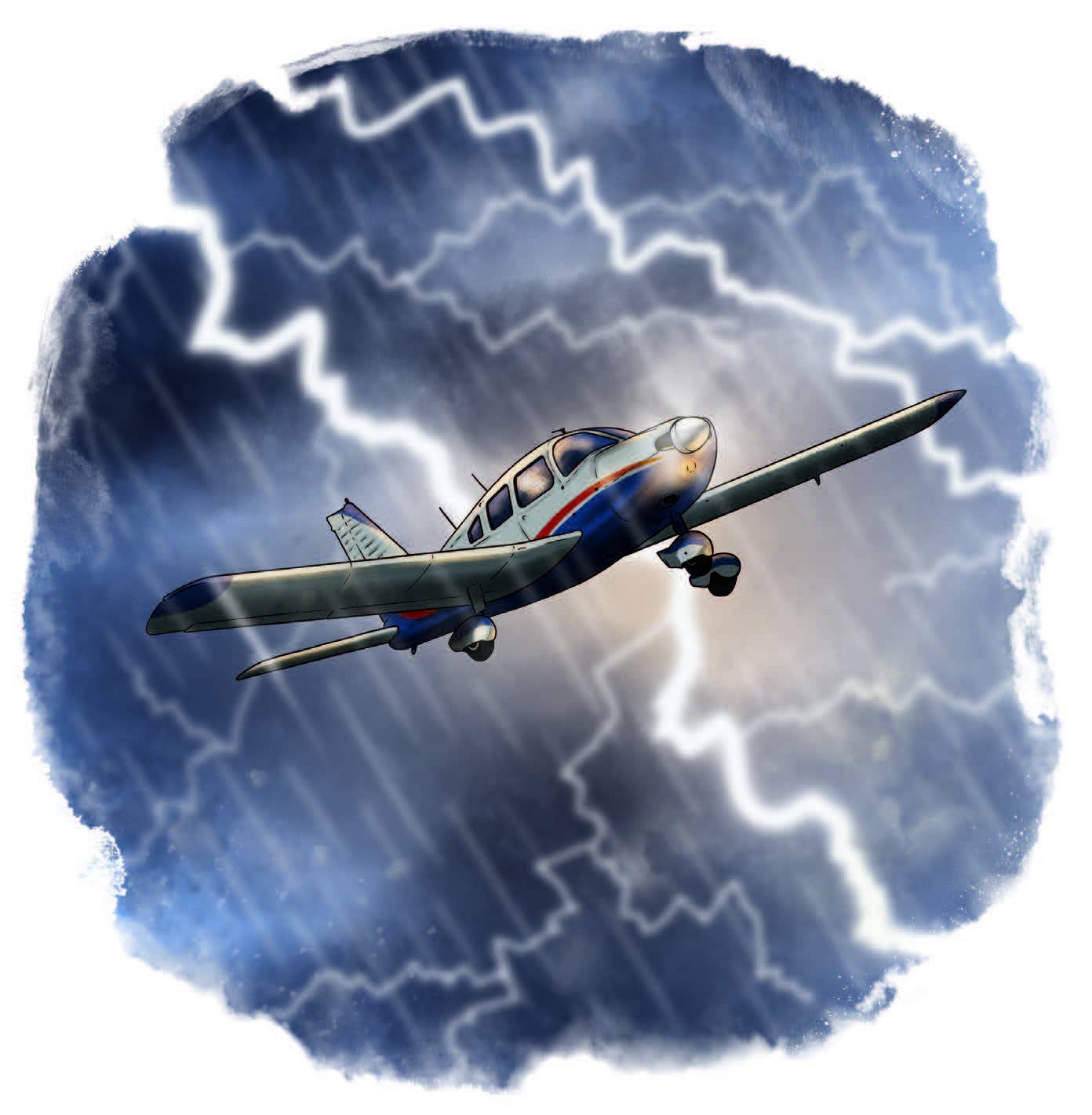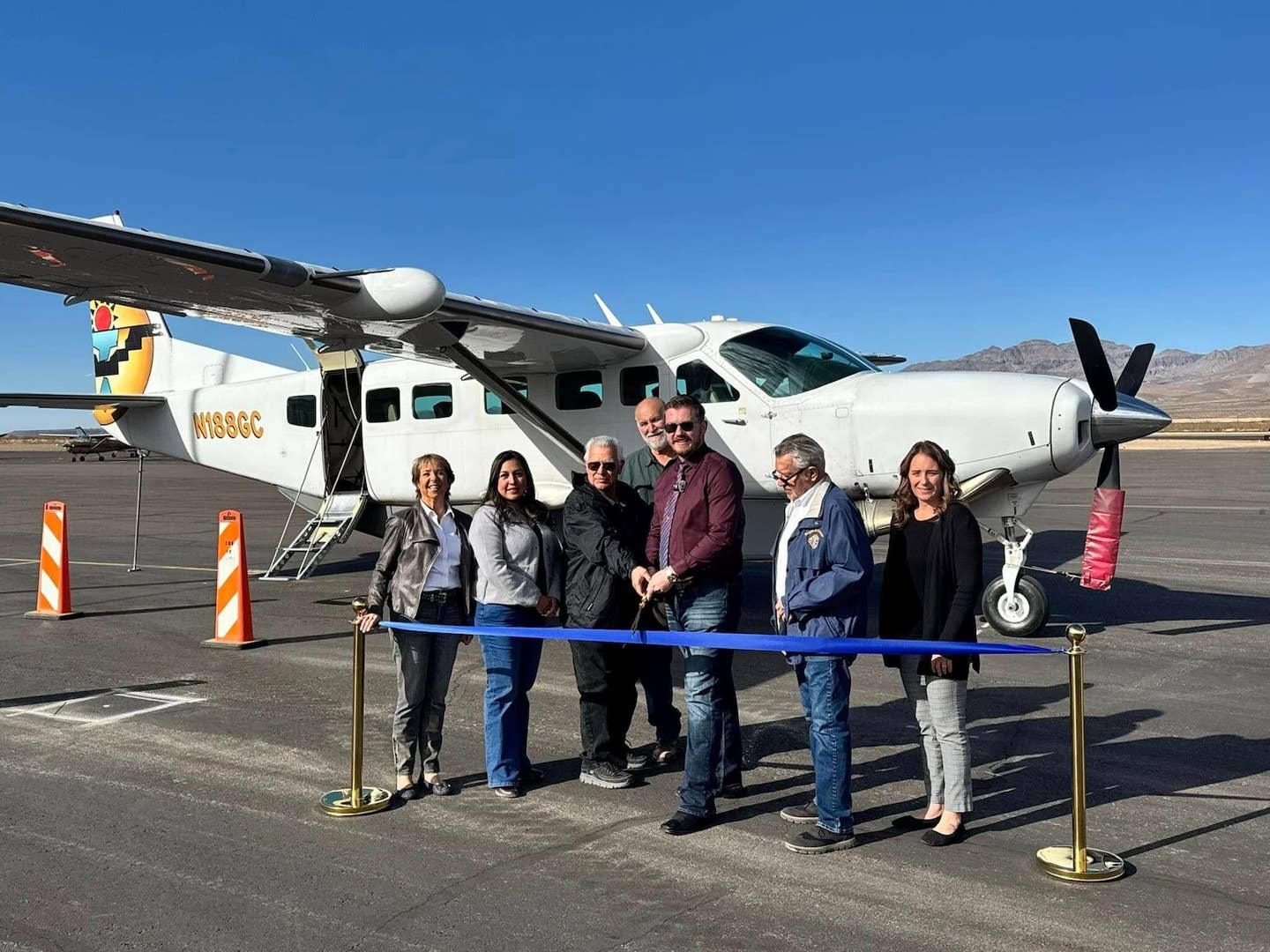
Early on June 23 of last year, two men and three teenage boys left Spirit of St. Louis Airport in a Cherokee Lance for some trout fishing at Gaston's White River Resort, which is located in the Ozarks of northern Arkansas. The 170 nm flight took an hour and a quarter.
Three days later, on June 26, a Friday, they prepared to return. It was muggy and warm, and there was no wind. The group loaded their baggage and gear into the airplane and took off eastward on the 3,200-foot grass runway. A resort guest videotaped the takeoff. About a third of the way down the runway, the pilot lifted the nosewheel from the grass. The Lance continued to accelerate but did not become airborne until the end of the runway. It briefly settled out of sight into a shallow depression and then reappeared. Its nose was high, its flight was unsteady, and it did not climb.
It continued for 3,500 feet beyond the end of the runway, gradually turning to the right to follow the bottomland between trees and hills alongside the White River, before striking a fence and a tree and tumbling to a stop, broken up into several pieces. There was no fire. The pilot and one of the boys died in the crash, and a second boy died later in the hospital. The man in the right front seat and his son, who was in the right middle seat and suffered serious injuries, survived.
The surviving father, who was only slightly hurt, described the takeoff to a sheriff's deputy. Just before starting, the pilot had said to him that "they were going to need the entire runway." When the Lance had lifted off and was following the shallow valley, the wheels touched the ground once, then touched down once again just before the airplane "rolled" several times. The last set of tire tracks before the crash site was on a heading of 120 degrees, about 50 degrees to the right of the runway heading.
A resort employee who had helped the group with their baggage reported that they seemed "tense" and "in a hurry to leave," and that the airplane was, in his opinion, overloaded. (He also supplied the curious observation that they "wore plastic bags on feet.") He ventured the judgment that the engine "didn't sound right before takeoff" and that the airplane "didn't appear to lift very well." Other witnesses described the airplane as porpoising once it became airborne, and its wings as "wig-wagging." A fisherman who saw the accident sequence from the White River, which runs alongside the runway, also expressed the opinion that the airplane "didn't seem like it had good power." Witnesses' accounts, however, can be retrospectively influenced by the fact that an accident occurred; investigators found nothing — other than the crash itself — to suggest that the engine had not been running normally.
Investigators weighed the contents of the front and rear baggage compartments. They collected the personal effects that were scattered about the wreckage and that had apparently been in the cabin or, as one witness reported, in the boys' laps. They assumed that about 26 gallons of fuel had been used on the trip from St. Louis. They calculated that the Lance had been overloaded by about 344 pounds when it left St. Louis, and it was still overloaded for the departure, though by only 188 pounds — about 5 percent of its 3,600-pound gross weight. Investigators noted that despite the weight, the heat and the shortness of the runway, the pilot had not used flap for the takeoff.
The National Transportation Safety Board showed the videotape of the takeoff to officials of the St. Louis entity that owned the Lance. They delivered themselves of the following opinion:
"Based on reports of four- to six-inch grass, [the pilot's] only hope to achieve takeoff speed would have been to keep the nose on the runway for almost three-fourths of the runway length. With a nose high attitude, he actually never achieved flying speed, as evidenced by the speeds recorded by the [Garmin GPS] 496. His continuation of the takeoff put him on the backside of the power curve, 'hanging on the prop' in ground effect.
"Based on the video, he was either trying to horse it off the ground and most likely [panicked] at that point (about midfield), or the airplane itself may have contributed to the pitch up moment given the overweight and aft CG."
The NTSB determined that the probable cause of the accident was "the pilot's poor judgment/decision making in attempting the no-flap takeoff, his failure to comply with weight and balance limitations, and his failure to calculate the airplane's performance under existing conditions."
The report does not disclose how investigators knew that the pilot had failed to calculate the airplane's takeoff performance. (He had obtained a weather briefing, which, by the way, had suggested the possibility of some convective activity in the vicinity and might have contributed to the group seeming to be in a hurry to depart.) If he did consult the performance charts, he would have found that, even with a 200-pound overload, the airplane would be expected to leave a paved runway within 2,000 feet and to clear a 50-foot obstacle in not much more than 3,000. With 25 degrees of flap, both figures would have been reduced by about 800 feet. A grass runway offers more rolling resistance, but, despite the unexplained reference by the airplane's owners to four- to six-inch grass, the grass at Gaston's was "manicured" and about an inch tall (as is apparent from photographs of the runway in the NTSB's online docket) and would not increase these distances by more than 10 percent. Using handbook data, the NTSB investigators arrived at an expected flaps-up distance to clear a 50-foot obstacle of 3,190 feet — just about the length of the runway.
Thus, while it would clearly have been preferable to use takeoff flaps, the pilot would have had every reason to expect that even without flaps the Lance should become airborne well before reaching the end of the runway, and would have no difficulty clearing hills that rose a few hundred feet two miles from the start of the takeoff roll.
The allowable CG range of the Lance at gross weight is 90 (the NTSB says 91.4) to 95 inches aft of datum. The report presents the weight and balance calculation for the accident flight, arrives at a value of 93.15, and then declares that "the aft CG limit was exceeded by 0.15 inches." Actually, the CG, based on the report's own figures, was not behind but actually 1.85 inches ahead of the aft limit of 95 inches. But even if it had been 0.15 inches — a bit more than one-eighth of an inch — out of limits, the error would have been inconsequential; the CG would have become legal if the back-seat passenger had leaned forward to tie his shoes.
Since handbook data would have supported the belief that the runway length was adequate and the airplane was well within CG limits, the reckless- and impatient-pilot theory that seems to underlie the NTSB's analysis appears to have little foundation. Perhaps there was some problem with the pilot's technique. One suggestion offered in the NTSB report is that the pilot prematurely raised the nose and therefore the Lance never achieved flying speed, "as evidenced by the speeds recorded by the [Garmin GPS] 496."
In fact, the GPS data are no more supportive of this analysis than the POH (pilot's operating handbook) and the CG calculations are of the others. According to the GPS, the Lance crossed the departure end of the runway at about 66 to 67 knots (groundspeed — but since there is no suggestion that the takeoff was made downwind, the indicated airspeed would have been about the same). The POH says that the liftoff speed for a gross-weight, flaps-up takeoff should be 64 knots, and the 50-foot barrier should be crossed at 69. So, considering the 5 percent overload, the pilot had the speed almost exactly right. But the airplane took longer than it should have to reach takeoff speed and then refused to accelerate further; it briefly touched 68 knots, only to slow to 63 moments before the crash. And this in spite of flying in ground effect, which should have facilitated its acceleration.
The finding of probable cause appears to be at odds with the information given in this accident report. The density altitude seems not to have been sufficiently high, nor the Lance sufficiently heavy, to explain the failure of its 300 hp Lycoming and three-blade propeller to make it accelerate. At high ambient temperatures, humidity (which the report does not discuss) reduces power, but by a few percentage points at most. And yet the Lance performed as if it had 250 horsepower rather than 300. The report does not mention the setting of the propeller pitch control, nor whether any water was found in the fuel sumps or gascolator, nor whether any obstruction or leak might have existed between the selected left fuel tank and the engine.
Sometimes the NTSB is satisfied to end its findings of probable cause with the phrase "for undetermined reasons." That phrase might have been appropriate here.
This article is based on the NTSB's report of the accident and is intended to bring the issues raised to our readers' attention. It is not intended to judge or to reach any definitive conclusions about the ability or capacity of any person, living or dead, or any aircraft or accessory.

Sign-up for newsletters & special offers!
Get the latest FLYING stories & special offers delivered directly to your inbox






